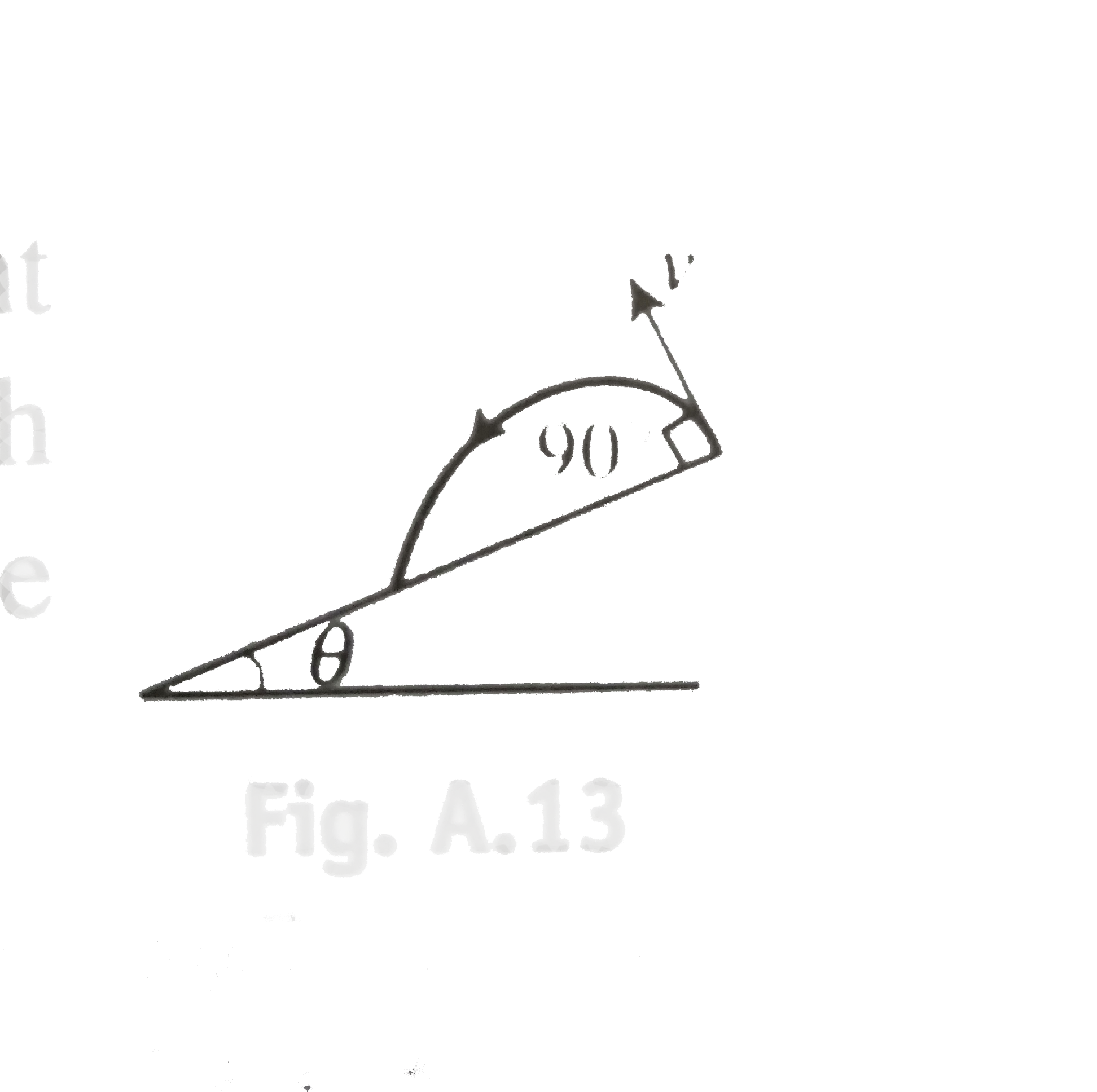For a projectile thrown with a velocity v, the horizontal range is √3v22g. The vertical range is v28g. The angle which the projectile makes with the horizontal initially is:
15∘
30∘
45∘
60∘
The correct Answer is:B
To find the angle which the projectile makes with the horizontal initially, we can follow these steps:
Step 1: Understand the formulas for range and height
The horizontal range (R) and vertical range (H) of a projectile are given by:
- Horizontal Range: R=u2sin2θg
- Maximum Height: H=u2sin2θ2g
Where:
- u is the initial velocity,
- θ is the angle of projection,
- g is the acceleration due to gravity.
Step 2: Substitute the given values
From the problem, we have:
- Horizontal Range: R=√3v22g
- Vertical Range: H=v28g
Step 3: Set up the ratio of vertical range to horizontal range
We can find the ratio of the vertical range to the horizontal range:
HR=v28g√3v22g
Step 4: Simplify the ratio
This simplifies to:
HR=v28g⋅2g√3v2=28√3=14√3
Step 5: Relate the ratio to the angle
From the formulas for range and height, we know:
HR=u2sin2θ2gu2sin2θg=sin2θ2sin2θ
Using the identity sin2θ=2sinθcosθ:
HR=sin2θ4sinθcosθ=tanθ4
Step 6: Set the two ratios equal and solve for tanθ
Now we equate the two expressions:
tanθ4=14√3
Multiplying both sides by 4 gives:
tanθ=1√3
Step 7: Find the angle θ
The angle θ can be found using the inverse tangent function:
θ=tan−1(1√3)
This corresponds to:
θ=30∘
Conclusion
The angle which the projectile makes with the horizontal initially is 30∘.
---
The horizontal range (R) and vertical range (H) of a projectile are given by:
- Horizontal Range: R=u2sin2θg
- Maximum Height: H=u2sin2θ2g
- u is the initial velocity,
- θ is the angle of projection,
- g is the acceleration due to gravity.
From the problem, we have:
- Horizontal Range: R=√3v22g
- Vertical Range: H=v28g
We can find the ratio of the vertical range to the horizontal range:
HR=v28g√3v22g
This simplifies to:
HR=v28g⋅2g√3v2=28√3=14√3
From the formulas for range and height, we know:
HR=u2sin2θ2gu2sin2θg=sin2θ2sin2θ
Using the identity sin2θ=2sinθcosθ:
HR=sin2θ4sinθcosθ=tanθ4
Now we equate the two expressions:
tanθ4=14√3
Multiplying both sides by 4 gives:
tanθ=1√3
The angle θ can be found using the inverse tangent function:
θ=tan−1(1√3)
This corresponds to:
θ=30∘
The angle which the projectile makes with the horizontal initially is 30∘.
Similar Questions
Knowledge Check
A projectile is thrown upward with a velocity v0 at an angle α to the horizontal. The change in velocity of the projectile when it strikes the same horizontal plane is
Av0sinα vertically downwardB2v0sinα vertically downwardC2v0sinα vertically upwardDzeroThe equation of projectile is y=16x−x24 the horizontal range is:-
A16mB8mC64mD12.8mThe equation of a projectile is y = ax - bx2. Its horizontal range is
AabBbaCa + bDb - a
What is the range of a projectile thrown with velocity 98m/s with angle 30∘ from horizontal ?
View SolutionA projectile is fired with a velocity v at right angle to the slope inclined at an angle θ with the horizontal. The range of the projectile along the inclined plane is

View SolutionA particle is projected with a velocity v such that its range on the horizontal plane is twice the greatest height attained by it. The range of the projectile is (where g is acceleration due to gravity)
View SolutionThe horizontal range and the maximum height of a projectile are equal. The angle of projection of the projectile is
View SolutionThe equation of a projectile is y=√3x−(gx22) the horizontal range is
View Solution
